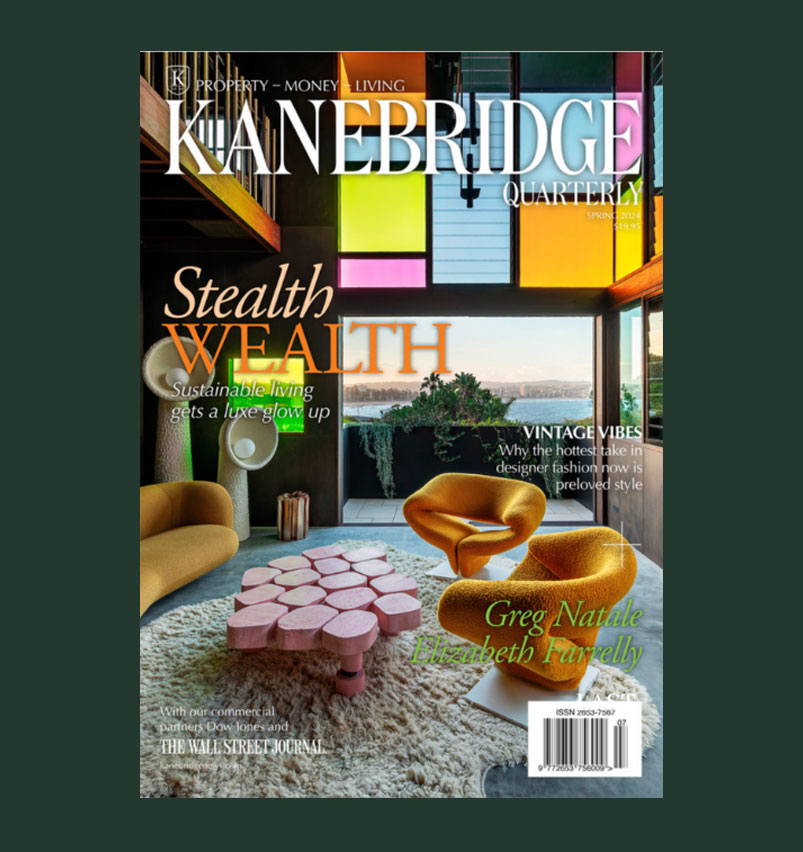The Met to Return 16 Statues to Cambodia and Thailand Over Trafficking Concerns
The Khmer-era sculptures are linked to an art dealer suspected of selling looted antiquities, authorities said
The Metropolitan Museum of Art has agreed to return 14 sculptures to Cambodia and two to Thailand, removing from its collection all Khmer-era artworks associated with an art dealer accused of selling antiquities illegally.
The Met said Friday it will temporarily display a selection of the 16 sculptures while arrangements are made for their repatriation. The works were made between the ninth and 14th centuries in the Angkorian period, the museum said. The Khmer empire ruled much of what is now Cambodia, Laos, Thailand and Vietnam from about 802 to 1431.
The sculptures are associated with art dealer Douglas Latchford, who was indicted in 2019 by the U.S. attorney’s office for the Southern District of New York, which said he orchestrated a multiyear scheme to sell looted Cambodian antiquities on the international art market. The indictment was dropped after Latchford’s death in 2020. Authorities later secured a $12 million civil forfeiture against his estate for stolen Southeast Asian antiquities they alleged Latchford had sold.
The Met said it cooperated with authorities in the U.S. and Cambodia following Latchford’s indictment and received information that made it clear the sculptures should be returned.
“The Met is pleased to enter into this agreement with the U.S. attorney’s office, and greatly values our open dialogue with Cambodia and Thailand,” said Max Hollein, the director and chief executive of the Met.
U.S. Attorney Damian Williams said in a statement Latchford was believed to have run “a vast antiquities trafficking network,” an allegation Latchford had denied. He urged cultural institutions and private collectors to remain vigilant about antiquity trafficking.
Many countries and cultures that were colonised have for decades asked institutions to return stolen artefacts. That effort has gained more traction in recent years, with many museums now openly acknowledging that some items in collections were gained through colonial exploitation and looting.
The Cambodian government in recent years has asked the Met and other museums to return artworks taken from their countries of origin under murky circumstances.
In 2013, the Met returned two 10th-century Cambodian stone statues, known as the “Kneeling Attendants,” which were also associated with Latchford. The statues were from the Koh Ker temple in the same province as the Angkor Wat temples. Officials said they believe they were stolen from the temple in the 1970s. The Met had acquired the statues from donors between 1987 and 1992, it said at the time.
One of the most high-profile repatriation efforts involves the Benin Bronzes, West African artefacts stolen more than a century ago from what is now Nigeria.
Roughly 3,000 to 5,000 artifacts were pillaged from the Kingdom of Benin by British soldiers in the late-19th century as the U.K. expanded its colonial empire in West Africa.
Many of the Benin Bronzes—a name used to cover a variety of artwork, including carved elephant tusks, brass plaques, and wooden heads—wound up in private collections and museums in Europe and the U.S. The Met returned three artifacts to Nigeria in 2021.
 Copyright 2020, Dow Jones & Company, Inc. All Rights Reserved Worldwide. LEARN MORE
Copyright 2020, Dow Jones & Company, Inc. All Rights Reserved Worldwide. LEARN MORE
This stylish family home combines a classic palette and finishes with a flexible floorplan
Just 55 minutes from Sydney, make this your creative getaway located in the majestic Hawkesbury region.
The remote northern island wants more visitors: ‘It’s the rumbling before the herd is coming,’ one hotel manager says
As European hot spots become overcrowded , travellers are digging deeper to find those less-populated but still brag-worthy locations. Greenland, moving up the list, is bracing for its new popularity.
Aria Varasteh has been to 69 countries, including almost all of Europe. He now wants to visit more remote places and avoid spots swarmed by tourists—starting with Greenland.
“I want a taste of something different,” said the 34-year-old founder of a consulting firm serving clients in the Washington, D.C., area.
He originally planned to go to Nuuk, the island’s capital, this fall via out-of-the-way connections, given there wasn’t a nonstop flight from the U.S. But this month United Airlines announced a nonstop, four-hour flight from Newark Liberty International Airport in New Jersey to Nuuk. The route, beginning next summer, is a first for a U.S. airline, according to Greenland tourism officials.
It marks a significant milestone in the territory’s push for more international visitors. Airlines ran flights with a combined 55,000 seats to Greenland from April to August of this year, says Jens Lauridsen, chief executive officer of Greenland Airports. That figure will nearly double next year in the same period, he says, to about 105,000 seats.
The possible coming surge of travellers also presents a challenge for a vast island of 56,000 people as nearby destinations from Iceland to Spain grapple with the consequences of over tourism.
Greenlandic officials say they have watched closely and made deliberate efforts to slowly scale up their plans for visitors. An investment north of $700 million will yield three new airports, the first of which will open next month in Nuuk.
“It’s the rumbling before the herd is coming,” says Mads Mitchell, general manager of Hotel Nordbo, a 67-room property in Nuuk. The owner of his property is considering adding 50 more rooms to meet demand in the coming years.
Mitchell has recently met with travel agents from Brooklyn, N.Y., South Korea and China. He says he welcomes new tourists, but fears tourism will grow too quickly.
“Like in Barcelona, you get tired of tourists, because it’s too much and it pushes out the locals, that is my concern,” he says. “So it’s finding this balance of like showing the love for Greenland and showing the amazing possibilities, but not getting too much too fast.”
Greenland’s buildup
Greenland is an autonomous territory of Denmark more than three times the size of Texas. Tourists travel by boat or small aircraft when venturing to different regions—virtually no roads connect towns or settlements.
Greenland decided to invest in airport infrastructure in 2018 as part of an effort to expand tourism and its role in the economy, which is largely dependent on fishing and subsidies from Denmark. In the coming years, airports in Ilulissat and Qaqortoq, areas known for their scenic fjords, will open.
One narrow-body flight, like what United plans, will generate $200,000 in spending, including hotels, tours and other purchases, Lauridsen says. He calls it a “very significant economic impact.”
In 2023, foreign tourism brought a total of over $270 million to Greenland’s economy, according to Visit Greenland, the tourism and marketing arm owned by the government. Expedition cruises visit the territory, as well as adventure tours.
United will fly twice weekly to Nuuk on its 737 MAX 8, which will seat 166 passengers, starting in June .
“We look for new destinations, we look for hot destinations and destinations, most importantly, we can make money in,” Andrew Nocella , United’s chief commercial officer, said in the company’s earnings call earlier in October.
On the runway
Greenland has looked to nearby Iceland to learn from its experiences with tourism, says Air Greenland Group CEO Jacob Nitter Sørensen. Tiny Iceland still has about seven times the population of its western neighbour.
Nuuk’s new airport will become the new trans-Atlantic hub for Air Greenland, the national carrier. It flies to 14 airports and 46 heliports across the territory.
“Of course, there are discussions about avoiding mass tourism. But right now, I think there is a natural limit in terms of the receiving capacity,” Nitter says.
Air Greenland doesn’t fly nonstop from the U.S. because there isn’t currently enough space to accommodate all travellers in hotels, Nitter says. Air Greenland is building a new hotel in Ilulissat to increase capacity when the airport opens.
Nuuk has just over 550 hotel rooms, according to government documents. A tourism analysis published by Visit Greenland predicts there could be a shortage in rooms beginning in 2027. Most U.S. visitors will stay four to 10 nights, according to traveler sentiment data from Visit Greenland.
As travel picks up, visitors should expect more changes. Officials expect to pass new legislation that would further regulate tourism in time for the 2025 season. Rules on zoning would give local communities the power to limit tourism when needed, says Naaja H. Nathanielsen, minister for business, trade, raw materials, justice and gender equality.
Areas in a so-called red zone would ban tour operators. In northern Greenland, traditional hunting takes place at certain times of year and requires silence, which doesn’t work with cruise ships coming in, Nathanielsen says.
Part of the proposal would require tour operators to be locally based to ensure they pay taxes in Greenland and so that tourists receive local knowledge of the culture. Nathanielsen also plans to introduce a proposal to govern cruise tourism to ensure more travelers stay and eat locally, rather than just walk around for a few hours and grab a cup of coffee, she says.
Public sentiment has remained in favour of tourism as visitor arrivals have increased, Nathanielsen says.
—Roshan Fernandez contributed to this article.
This stylish family home combines a classic palette and finishes with a flexible floorplan
Just 55 minutes from Sydney, make this your creative getaway located in the majestic Hawkesbury region.






















